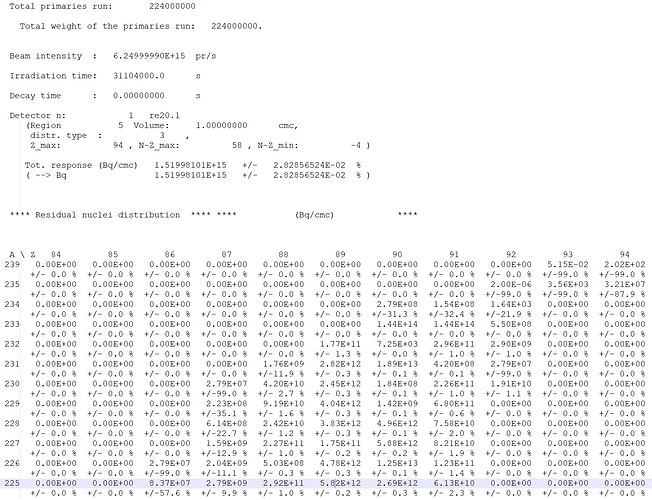Dear @lichen,
Thank you for your question.
Can you tell me in what situation is this card (PHYSICS with SDUM=IONSPLIT) used?
The PHYSICS card with SDUM = IONSPLIT requests an old and very crude ion-nucleus reaction model which had its merit in the past, when there was no dedicated ion-nucleus (and especially no deuteron-nucleus) reaction model in FLUKA: it told the code to split ions into their constituent protons and neutrons (forwardly emitted), such that at least the latter could be transported and later interact via FLUKA’s hadron-nucleus reaction models. Of course, splitting an ion into (forward-emitted) protons and neutrons was a very crude attempt at an ion-nucleus interaction model.
As of FLUKA v4-2.0, a dedicated deuteron-nucleus reaction model was implemented, and ion-nucleus reaction models have been included in the code for the last ~15 years. Thus, as of FLUKA v4-2.0 there should be no scenario in which the PHYSICS card with SDUM=IONSPLIT is needed as a proxy model for any ion-nuclear inelastic interaction, since proper ion-nucleus reaction models are built in the code.
This option should be deprecated.
The results with IONSPLIT card are an order of magnitude larger than those without IONSPLIT.
In your input snapshot, since for the PHYSICS card with SDUM=IONSPLIT your WHAT(4) and WHAT(5) (indicating the minimum and maximum ion mass numbers for which the crude ion splitting should be performed) were left empty, the default values were used, which cover all ion species.
As a result, your primary 12C ions were forced to (artificially) split into 6 protons and 6 neutrons pretty much immediately. This led to an artificially high flux of protons and neutrons, which then interacted, and led to the excessively high production rate of the isotopes you point out.
Instead, with ion splitting switched off (as it should be), all ion-nucleus inelastic interactions are duly treated by FLUKA’s dedicated ion-nucleus inelastic interaction models (more details can be found here), driven by a proper reaction cross section (i.e. rate), and providing a realistic distribution/multiplicity of secondaries (including also d, t, 3He, 4He, and other fragments) and residual nuclei (especially with the first two PHYSICS cards you pass).
Cheers,
Alexandra


